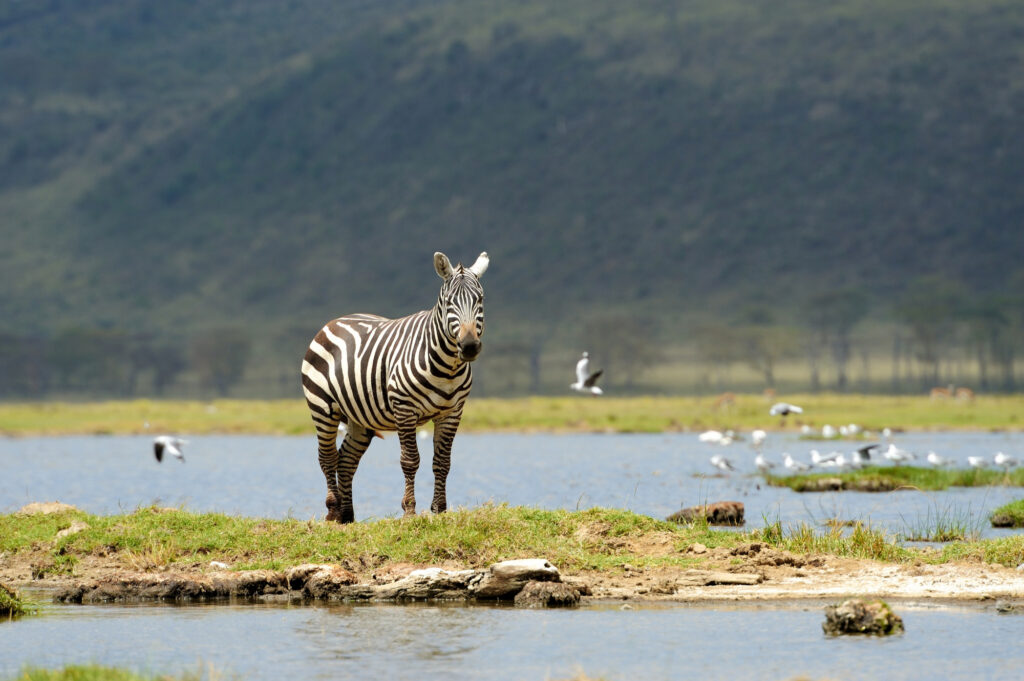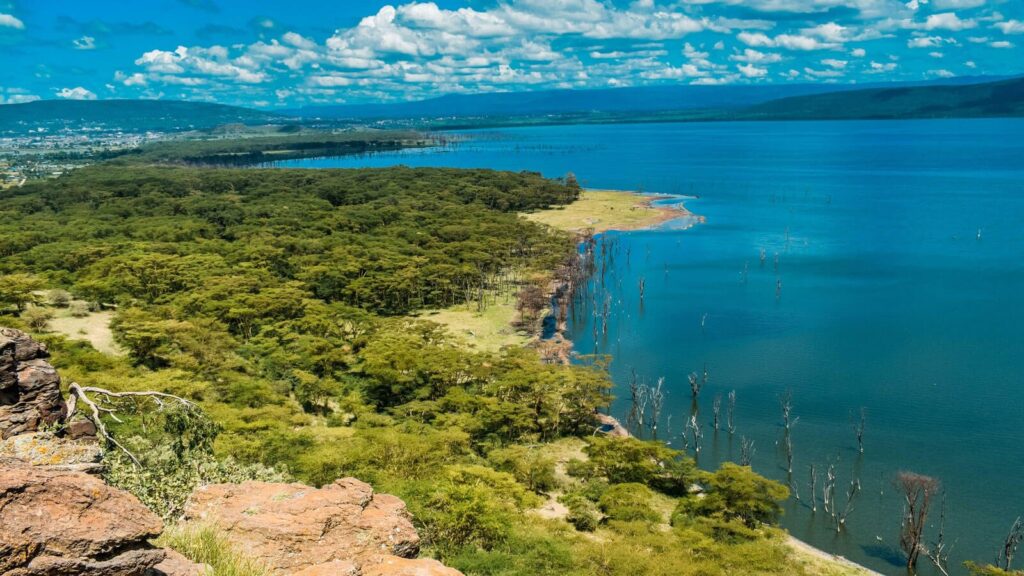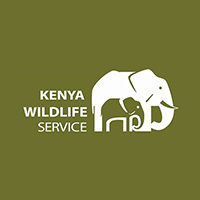

















A beautiful wildlife haven
Affiliate Disclosure: This listing may contain affiliate links. If you click through and book a tour, I may earn a small commission at no extra cost to you.
Lake Nakuru National Park, one of Kenya’s most celebrated parks, is set around the shimmering Lake Nakuru in the Great Rift Valley, about 140 km northwest of Nairobi. The park’s ecosystem combines the alkaline lake, wooded grasslands, rocky escarpments, and sweeping ridges, creating breathtaking scenery and rich biodiversity.
Once famous for its vast flocks of flamingos painting the shoreline pink, Lake Nakuru remains a haven for wildlife. Although rising water levels in 2014 displaced many flamingos, smaller numbers have returned, and the park still offers incredible birdwatching and safari experiences.
Lake Nakuru supports over 56 mammal species, including both black and white rhinos, buffalo, lions, leopards, and giraffes. Birdlife here is extraordinary, with more than 500 recorded species, from pelicans and storks to the endangered Abyssinian thrush and Rüppell’s vulture.
Unique vegetation includes 550 plant species, among them East Africa’s largest euphorbia forest and striking yellow acacia woodlands.
Note: No public transport enters the park – arrange a transfer through your accommodation or hire a vehicle.
It is renowned for its rhino sanctuary, diverse birdlife, and breathtaking Rift Valley landscapes.
Yes, but in smaller numbers. The flamingos migrate depending on water levels and food availability.
Visitors can spot lions, leopards, rhinos, Rothschild’s giraffes, buffalo, zebras, and over 500 bird species.
The park is about 140 km northwest of Nairobi, a 2–3 hour drive via the Nairobi–Nakuru highway.
The park is open year-round, but the dry seasons (June–October and January–March) are ideal for game viewing.
Lake Nakuru National Park has received 0 reviews with an average rating of 0 out of 5
Please log in or create an account to leave a review.
Update your info, boost visibility, and connect with more customers!